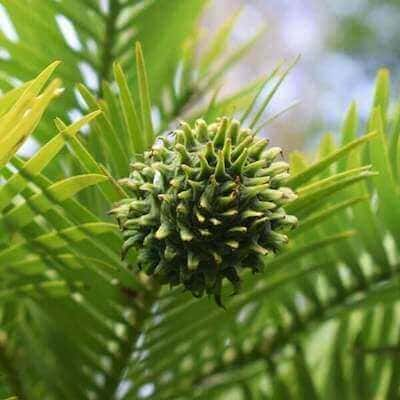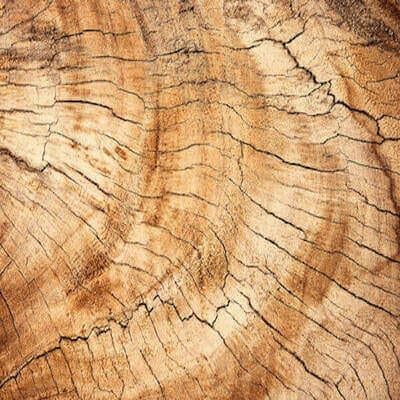Softwoods
A forest is a carbon bank, every tree a deposit.
The Wollemi pine is a rare and ancient tree species that is native to a remote area of the Blue Mountains in New South Wales, Australia. It is often referred to as the "dinosaur tree" because it has survived for more than 200 million years and was once thought to be extinct.
The Wollemi pine was discovered in 1994 in a hidden canyon in the Blue Mountains by a park ranger named David Noble. The discovery was significant because the tree had only been known from the fossil record prior to this, and was thought to have become extinct more than 2 million years ago.
The Wollemi pine is considered a "living fossil" because it has many primitive characteristics that are similar to those of ancient conifers from the Jurassic period. The tree has unusual cones that are about the size of a chicken egg, and the cones remain on the tree for many years before falling off.
The reproductive habits of the Wollemi pine are also surprising. The tree is capable of producing both male and female cones on the same branch, which is a rare trait among conifers. The tree also has the ability to regrow from its own branches or from the base of the trunk, which helps it to survive wildfires and other natural disasters.
Due to its rarity and ancient lineage, the Wollemi pine has become a popular tree for collectors and plant enthusiasts. The tree is now grown in botanical gardens and arboreta around the world, and efforts are being made to preserve and protect the wild population in Australia.
Scientists estimate that only 200 Wollemi Pine trees exist in the park. Some believe that there actually may be only one tree with an interconnected root system with child trees growing from the same root. As the cones of the Wollemi tree mature, they open, and wind pollinate the forest floor. The tree is "monoicous" (unisexual) having both male and female cones, which always appear above the male cones on the tree giving it a prehistoric look. In 2008, the Australian Botanical Gardens initiated a propagation program hoping to establish the Wollemi worldwide and create biodiversity within its genome. As experimental groves are planted worldwide, this ancient Australian pine has proved to be more cold tolerant than once believed. Some of these new Wollemi Pine groves are planted as far north as Scotland and the Northern part of British Columbia, Canada. The oldest Wollemi Pine tree currently growing in the park are believed to be over 1,000 years old. The find is so rare, it was kept secret from the world for over twenty years.
Wollemi looks unusual too, something right out of Jurassic Park. With fern like leaves and bark textured like the skin of a Dinosaur, it is like no other Australian pine or any tree on earth for that matter. The trees grow in clumps sometimes 100 or more at a time. One Wollemi Pine tree eventually will establish dominance over the other Wollemi trees and grow to 150 feet or more. Like other pine species, this pine branches from the main trunk, but unlike other species, branches do not continue branching and die off or form a cone at the tip.
Reviving extinct species of trees through cloning has become a topic of great interest in the scientific community. This emerging field offers the potential to bring back lost biodiversity and restore ecosystems, as well as discover unknown medicinal benefits. Inspired by the discovery of the Wollemi Pine, learn how scientists are attempting to use cloning techniques to bring back extent tree species.
Wollemi Pine seed needs to be soaked in room temperature water for a day or two. Seeds that sink will have a higher germination rate than seeds that float. Wollemi Pine seeds do not need to be stratified (placed in a refrigerator at a consistent cold temperature) as temperate trees do. The seeds should be towel dried and then planted in soil immediately. Like most conifers, the seeds germinate and grow best in a soil that is slightly acidic. Planting the seeds in a nursery propagation tray should work perfectly. Germination can occur in as little as six weeks depending on elevation, but longer germination cycles are common.
Softwoods, the pioneer species of the temperate forest, grow quickly to leave their mark on the landscape for centuries.
Partner with us in a land management project to repurpose agricultural lands into appreciating tree assets. We have partnered with growingtogive.org, a 501c3 nonprofit, to create tree planting partnerships with land donors.
We have partnered with growingtogive.org, a Washington State nonprofit to create a land and tree partnership program that repurposes agricultural land into appreciating tree assets.
The program utilizes privately owned land to plant trees that would benefit both the landowner and the environment.
If you have 100 acres or more of flat, fallow farmland and would like to plant trees, then we would like to talk to you. There are no costs to enter the program. You own the land; you own the trees we plant for free and there are no restrictions; you can sell or transfer the land with the trees anytime.
Copyright © All rights reserved Tree Plantation


